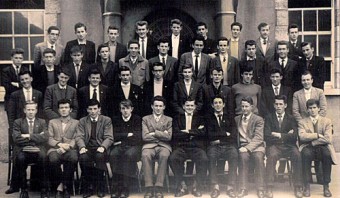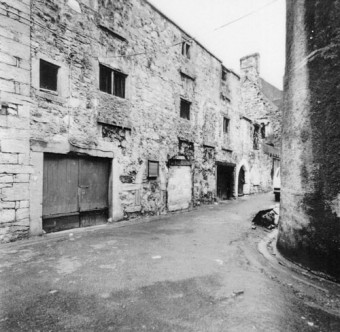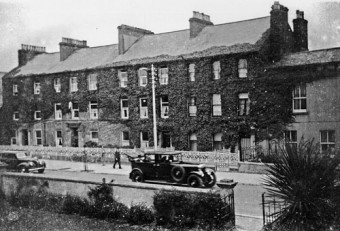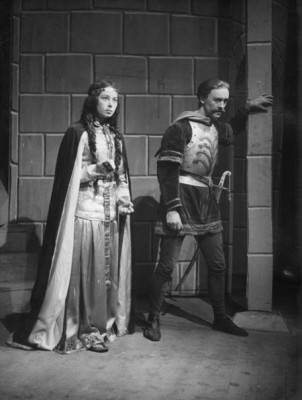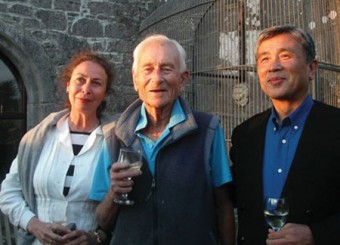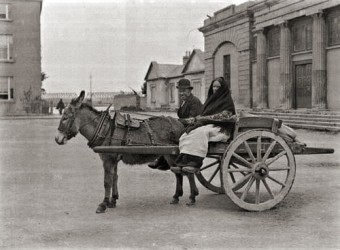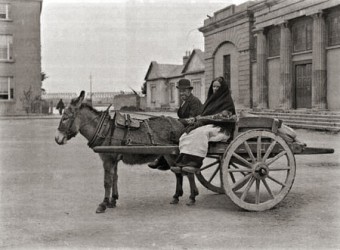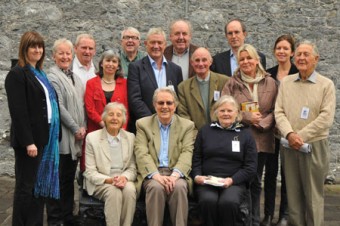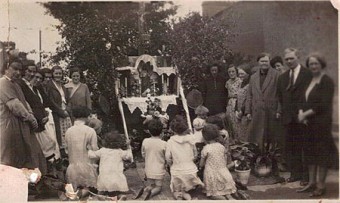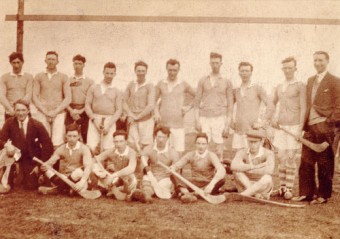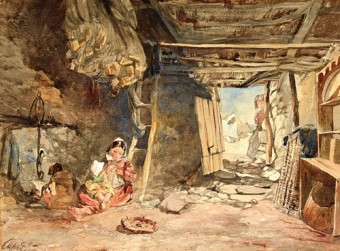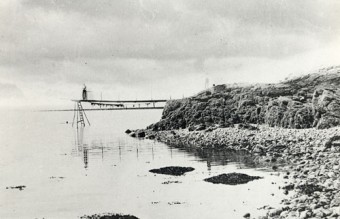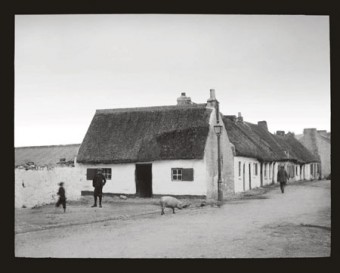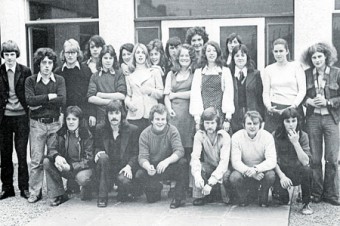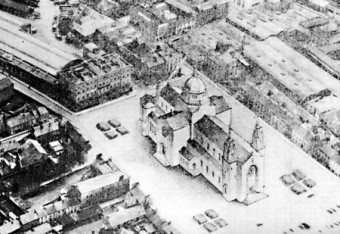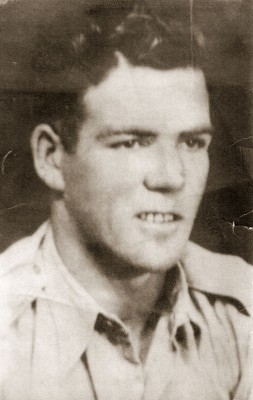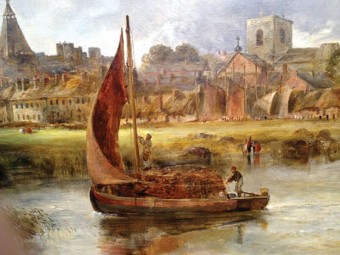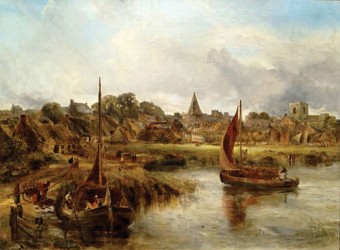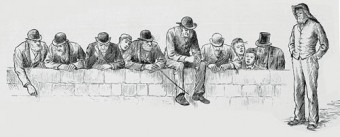The Bish, one hundred and fifty years
Thu, Dec 06, 2012
On this day one hundred and fifty years ago, St. Joseph’s Secondary School formally opened. It represented a triumph for Dr McEvilly, Bishop of Galway, who had worked tirelessly to get the Patrician Brothers to Galway to add to the educational facilities for Catholic boys in the city. Indeed the bishop’s association with the school was such that it became known as ‘The Bish’. Others regarded it as a seminary for preparing boys for the priesthood and so it was also known colloquially as ‘The Sem’.
Read more ...Kirwan’s Lane
Thu, Nov 29, 2012
This medieval street dates back as far as the 16th century and is believed to be one of only five medieval lanes that still exist in the city out of an original 14. It is considered by historians and archaeologists to be one of the richest areas “in terms of its medieval layout, building design and street plan”. It evidently received its name from the Kirwan family, one of only two of ‘the tribes’ who were of Gaelic origin. They were successful merchants and landowners who moved into the city around 1490, and whose wealth helped Galway reach the peak of its splendour during the 16th and 17th centuries.
Read more ...St Bride’s nursing home
Thu, Nov 15, 2012
St Bride’s was situated on Sea Road and was opened in 1916 by Dr William AF Sandys. He was soon joined by Dr Michael O’Malley and by Dr Joseph Watters, who was the anaesthetist. Both doctors Sandys and O’Malley lived in the Crescent, so it was very convenient for them. It was a private nursing and maternity home accepting medical, surgical, and maternity cases. Generations of Galwegians were born here, and many more would have had their tonsils out or their appendix removed here.
Read more ...Taibhdhearc Na Gaillimhe
Thu, Nov 08, 2012
The history of theatre in Ireland goes back to the start of the 17th century. The beginning of the 20th century saw the emergence of plays written in Irish and that movement was given a significant boost with the opening of An Taibhdhearc on August 27, 1928. It is the oldest operational theatre in Galway and is Ireland’s National Irish Language Theatre. The title is made up of two Irish words, taibh meaning ‘spectacle or ghost’ and dearc meaning ‘behold’.
Read more ...Finding fathers in the ruins of war
Thu, Nov 08, 2012
One of the most extraordinary meetings in the aftermath of any war took place in May 2004 in Oranmore Castle, the home of the late Commander Bill King RN, and his family.
Read more ...The Town Hall
Thu, Oct 25, 2012
In the excitement of going away on holiday I gave the Advertiser the wrong text with last week’s photograph, so herewith the correct text and photograph.
Read more ...Courthouse Square c.1890
Thu, Oct 18, 2012
This interesting aspect of Courthouse Square shows the Town Hall on the left and The Convent of Mercy National School in the distance. The Mercy Sisters arrived in Galway in 1840 to a house in Lombard Street. The following year they bought JoycesDistillery and Mill house and stores on St. Stephen’s Island together with the excellent dwelling house and offices in which Mrs. Joyce resided. They converted these and opened a school there and called it St. Vincent’s Academy. They were very busy during the Famine and ran three soup kitchens, one in St. Vincent’s, one in Bohermore and one in Bushypark.
Read more ...Courthouse Square, c1890
Thu, Oct 11, 2012
This interesting aspect of Courthouse Square shows the Town Hall on the left and the Convent of Mercy National School in the distance. The Mercy Sisters arrived in Galway in 1840 to a house in Lombard Street. The following year they bought Joyce’s Distillery and Mill house and stores on St Stephen’s Island together with the excellent dwelling house and offices in which Mrs Joyce resided. They converted these and opened a school there and called it St Vincent’s Academy. They were very busy during the Famine and ran three soup kitchens, one in St Vincent’s, one in Bohermore, and one in Bushypark.
In 1875 they built the primary school in our photograph on a vacant site across the road. The design was Gothic and very attractive and was built to accommodate 700 pupils. The Reverend Mother had a tunnel built under the road to connect the school and convent. English, French, arithmetic, music, domestic economy, and book-keeping were on the curriculum. In 1902, Irish was added, and from 1922-24, Pádraic Ó Conaire taught there, his aunt Sister Magdalen Conroy being a member of the community. Nora Barnacle went to school here.
Read more ...Lady Gregory’s Secret, and other frailties...
Thu, Oct 04, 2012
If anyone thought that academics sharing their enthusiasm for the landscape, writers and artists associated with Coole Park, Co Galway, would be boring and stuffy, they had a surprise last weekend. There were some jaw-dropping moments when Lady Augusta Gregory’s secret love affair was revealed; and when WB Yeats went off the rails in the years following her death, and had a series of love affairs.
Read more ...One hundred years of St Bridget’s Terrace
Thu, Oct 04, 2012
There can be few streets in this country that are as well documented as St Bridget’s Terrace. It was built 100 years ago on St Bridget’s Hill. The hill overlooked the town and was of great strategic and military importance. Both the Cromwellian and Williamite armies camped there when attacking Galway. During the 17th century, the hill was known as ‘Gottyganavy’. In 1710 the name had evolved to ‘Knocknegany’ and on Logan’s 1818 map of the city, it is depicted as Cnoc na Gainimhe (the Hill of Sand, or Sandpit Hill).
Read more ...The most Irish of games
Thu, Sep 27, 2012
Hurling is said to be older than the recorded history of Ireland and to predate Christianity. In Seamus King’s remarkable book The History of Hurling, there is a reference from Irish verbal history of hurling being played as far back as 1,200BC in Tara, County Meath. The earliest written references to the sport in Brehon law are from the fifth century.
Read more ...The Great Famine in the Claddagh
Thu, Sep 20, 2012
In March 1846, it was reported, “In the town of Galway, people were suffering under the most trying privations; not a stone of potatoes could be purchased at market for the use of 20,000 inhabitants, and in the western suburbs in the Claddagh, the fishermen have been living on half rotten potatoes.”
Read more ...Swimming and diving at Blackrock
Thu, Sep 13, 2012
You can see from this turn of the century photograph why this area of Salthill would be known as Blackrock. Up until about that time there was a great tradition of fishing here. There was a small cluster of fishermen’s thatched cottages at Blackrock until the night of the Big Wind, when they were all literally blown away by the storm and the tide, forcing the occupants to move further inland.
Read more ...Lower Fairhill Road, c1895
Thu, Aug 30, 2012
Lower Fairhill Road ran from Garra Glas in the heart of the Claddagh to the bridge over the canal at Dominick Street. Our photograph today, dated c1895, was taken roughly from where the traffic lights on Fr Griffin Road are today, looking towards Monroe’s.
Read more ...Ashe Road, sixty years
Thu, Aug 16, 2012
An important stage in Galway’s housing drive was reached in 1952 when the Minister for Local Government, Mr P Smith, opened three housing schemes comprising 142 new houses, 12 at Ballybrit, 30 in the Claddagh, and 100 in Shantalla.
Read more ...The cathedral in the square
Thu, Aug 09, 2012
“Galway, the Capital of Connacht, historic metropolis of the Tribes and one of the principal cities of Ireland, looks sad, lonely, sorrowful and dejected without a cathedral, a cathedral towering over, and proudly commanding by its majestic presence the city and its surroundings. Our beautiful plaza, the Square, and I don’t mean the Green with its shoddy rusty time-worn railings — stands as it were, already prepared — God’s Holy Acre long waiting for the Cathedral of the rising resurgent west. The railings would of course be removed making the Green a spacious foreground, and incidentally a delightful parking space, an area almost as large as the Square itself. No spot on earth is good enough for God’s House and “the place where His glory dwelleth”. The Square is the best Galway can give”.
Read more ...It’s a long way from Sickeen to Sicily
Thu, Aug 02, 2012
About 1,600 miles as the crow flies. A young Galwegian found himself there in the stinking heat of July 1943. He would swap the Dyke Road for the Sunken Road, or the Sandy River for the Simeto River. For sure he would rather have been somewhere else, kicking ball in the Plots, up the Dyke Road, or swimming down at the Waterside, maybe even venturing to Cooper’s Cave... turning up in St Brendan’s with no homework done was a walk in the park compared to this.
Read more ...Woodquay in 1850
Thu, Jul 26, 2012
Last week we showed you a reproduction of a painting of Woodquay which was painted by an English artist, William JC Bond, in 1850. Today, we show you two details from that painting, each one showing a side of Woodquay.
Read more ...Woodquay in former times
Thu, Jul 19, 2012
William Joseph JC Bond (1833-1926) was a landscape and marine painter of the Liverpool School who was much influenced by Turner, and in the 1850s and 1860s, by the Pre-Raphaelites. His work features in a number of museums and galleries. He came to the west of Ireland on a number of occasions, we know one of his paintings was titled “Near Oranmore” and he also painted “The Galway Coast” in 1872. Our main image today is of an oil painting he did of Woodquay in 1850, and the second is a detail from that painting. He may have taken some artistic licence, but his picture underlines the importance of early artworks as historical documents in an era before photography reached Galway.
Read more ...Looking over the Salmon Weir Bridge
Thu, Jul 12, 2012
This charming drawing appeared in a London newspaper called The Illustrated Sporting and Dramatic News which was published on October 4, 1879. It shows a group of men and boys (no females) watching the salmon waiting to go upstream. On the right is a study of a water bailiff. The drawing was made by M.F., and his accompanying text is very flowery.
Read more ...